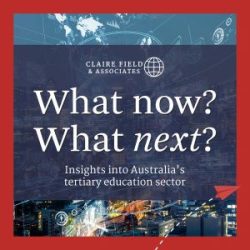In recent years, the Australian government has actively promoted the idea of redirecting international students from capital cities to regional areas. The controversial proposal to cap international student numbers was touted as a measure that would “do a lot of good” for regional areas—and ostensibly for students as well. When the proposal failed to pass, the government accused the opposition of betraying regional communities by blocking the legislation. Simultaneously, the government claimed that studying in regional areas would benefit international students by providing access to smaller towns with greater employment opportunities and a lower cost of living.
While the promise of enhanced career opportunities in regional areas may seem appealing, there is little evidence to suggest that these regions are equipped to deliver the jobs being promised. Though statistical data indicates there are vacancies, the majority are concentrated in industries unrelated to the professions that most international students are pursuing. The concept of aligning international education and immigration with labor market demand is sound in theory, but the reality reveals a mismatch between the skills students acquire and those required for available jobs.
A closer look at the list of regional campuses underscores this disconnect. Many of these campuses are situated in areas without significant industrial hubs. For students studying IT or business, the outlook is bleak, as most small regional enterprises lack the capacity to employ professional staff in significant numbers. Similarly, for students in niche fields like performing arts or science, it is hard to see how these regional areas could adequately support their career aspirations while also contributing meaningfully to the Australian economy.
In addition to finding jobs aligned with their studies, international students are expected to support the broader economy by taking on part-time or casual work. However, the Jobs and Skills Australia Regional Labour Market Indicator (RLMI) report suggests otherwise. Most regional and remote areas experience weaker labor market conditions, including slower growth and fewer vacancies, compared to capital cities. This disparity presents further challenges for all job seekers, including international students and graduates.
Any reforms to international education policy should prioritise the growth of Australia’s international education sector while addressing the needs of students. Such reforms must be developed through comprehensive consultations with international education providers and other stakeholders, including those based in regional areas. Ensuring that students’ study and work experiences are continuously improved is critical to the success of these policies.
Finally, the premise of bringing international students to regional areas assumes they will remain there, contributing to local economies and communities. However, under the current initiative, it is far more likely that students will treat their time in regional areas as a “check-the-box” requirement to obtain permanent residency before relocating to urban centers. The reality is that, even without caps, regional study destinations have consistently been less appealing than capital cities.
If the government continues to push international students into regional areas without addressing these underlying challenges, Australia risks diminishing its appeal as an international study hub. Other countries, such as New Zealand, are experiencing strong post-COVID recovery in their international education sectors. Without thoughtful and student-focused policies, Australia may face long-term negative consequences for both its education industry and economy.

















